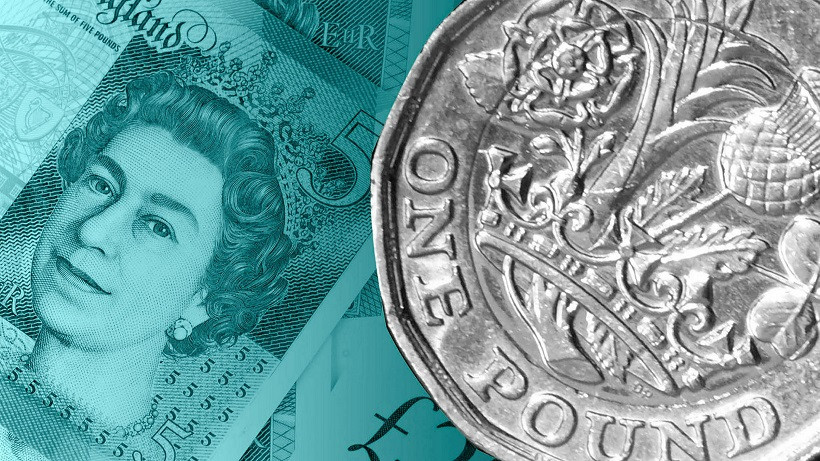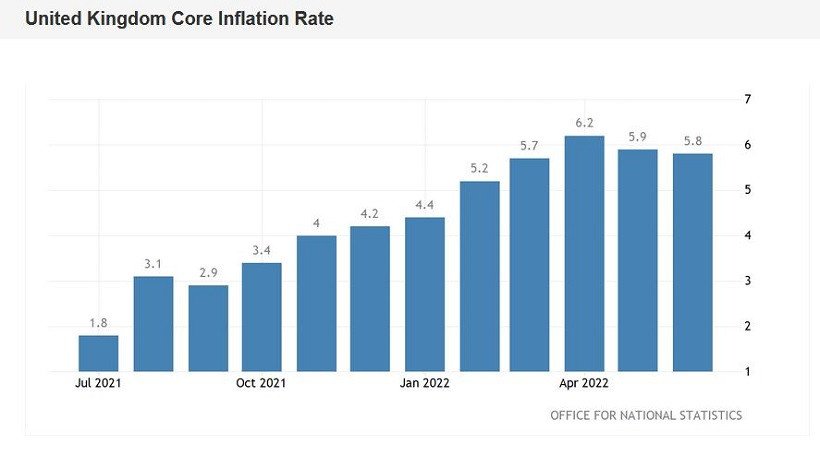The pound-dollar pair is trying to return to the area of the 20th figure. Buyers of GBP/USD are behaving cautiously, so the corrective growth is developing slowly. On the eve of the July Fed meeting, which will take place next week, market participants do not risk investing in the dollar, and this fact allows the pair's bulls to counterattack. And yet, in my opinion, longs still look risky. After all, the strong inflation report on the growth of British inflation, published this morning, has its own flaw—a very significant one.

Thus, the overall consumer price index in June rose to 0.8% on a monthly basis, while experts expected it to be around 0.7%. In annual terms, the index also came out in the "green zone," rising to 9.4%. It is a long-term record—the last time the CPI was at this height was in February 1982. The locomotive of the growth of general inflation was energy prices. At the same time, there was a decrease in prices for used cars and audiovisual equipment. According to a number of analysts, inflation may reach 11 percent in the fall due to another wave of rising energy prices.
It is noteworthy that, excluding volatile food and energy prices, the core inflation indicator again showed minimal, but still downward dynamics, falling in June to 5.8% YoY after reaching a multi-year high of 6.2% in April. This factor can play a significant role in determining the pace of monetary policy tightening by the Bank of England.
Note that there is no consensus on the market regarding the further actions of the English regulator. One can only be sure that the Central Bank will again raise the interest rate at the next meeting (which will be on August 4). But by how much is an open question. Many currency strategists are confident that the regulator will decide on a 50-point increase, although not everyone agrees with this assumption.
In general, Bank of England Governor Andrew Bailey questions such a scenario. During his speech yesterday, he said that a 50 basis point rate hike is not a settled issue, "and anyone who predicts this is doing it based on their own opinion." Bailey stressed that a 50-point increase in the rate will indeed be discussed in August, but it is impossible to predict the outcome of this discussion now.
Recall that following the results of the June meeting, only three members of the Committee, Michael Saunders, Catherine Mann and Jonathan Haskel, voted for raising the rate by 50 basis points. But they remained in the minority—the other six of their colleagues insisted on a 25-point increase.
And at the moment, it is impossible to say with certainty that the "hawk wing" of the Bank of England will strengthen at the expense of other members of the Committee. The slowdown in the growth of core inflation is a wake-up call for hawks and a "saving straw" for the conditionally dovish wing, whose representatives defend the idea of a systematic tightening of monetary policy.

Latest data on the growth of the British economy can also be interpreted in different ways, depending on how to place the appropriate accents. On the one hand, data published last week turned out to be unexpectedly strong. The gross domestic product grew by 0.5% in May after a 0.2% decline in April. At the same time, most analysts predicted a decrease in this indicator in the negative area, to the level of -0.2%. Quarterly growth was also recorded to 0.4%, while economists expected to see this indicator at zero. On an annualized basis, the volume of GDP increased by 3.5% (with growth forecast to 2.7%).
At first glance, it is certainly a strong result. However, the positive dynamics was largely due to temporary factors. The structure of the release suggests that two factors primarily contributed to the growth of the British economy: increased demand for travel agency services due to the holiday season and increased demand for medical services ("thanks" to another outbreak of coronavirus in the UK).
In other words, the question of a 50-point rate hike at the August meeting remains open. Today's inflation report, apparently, did not convince investors that the scales have definitely tilted in favor of this scenario (primarily due to the slowdown in the growth of the core CPI). That is why GBP/USD traders reacted so restrainedly to the release: the pound is still under background pressure, but at the same time, it is able to slowly move up in pair with the greenback due to the weakening of the latter.
Such a fundamental background indicates the riskiness of long positions. The GBP/USD pair is currently uncertainly (but persistently) testing the resistance level of 1.2020 (the middle line of the Bollinger Bands indicator on the daily chart). But even after overcoming it, you should not rush with longs. Long positions will be relevant only after overcoming the next price barrier at 1.2080 (the Kijun-sen line on the same timeframe). If the upward momentum fades at 1.2020–1.2080, it is advisable to consider short positions with the first target at 1.1900 (the Tenkan-sen line on the daily chart).
Trading analysis offered by RobotFX and Flex EA.
Source



Please do not spam; comments and reviews are verified prior to publishing.